Over Ten Years in the Making, Scorbit is on the Verge of a Breakout
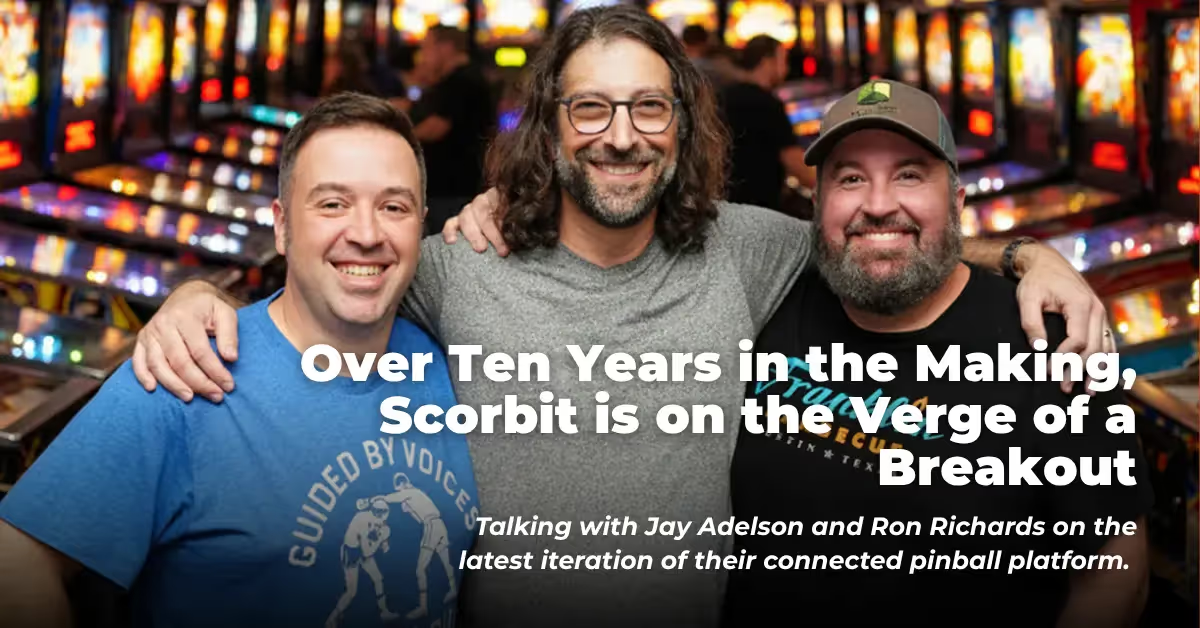
Overnight success is a fickle thing. Often dreamed about by artists and executives alike, it’s an elusive target that’s rarely achieved. And even when that metaphorical summit has been scaled, and the achievement celebrated in the public sphere, it’s easy to forget not only how long it took the climber to travel from the base of the mountain to its peak, but how long it took the climber to put themselves in a position to climb it at all.
Scorbit, the pinball industry’s first connected pinball platform, has been training and building towards its own moment for well over ten years. And on the eve of a complete relaunch of the product, the company finds itself injected with new energy, funding, and importantly, focus, that could see it finally deliver on the promise of its first public product iteration, which was first revealed back in 2020.
I had the opportunity to have an extended chat with company co-founders Jay Adelson, CEO, (who also notably cofounded Digg, Equinix, and many others) and Ron Richards, CSO (former Marvel/Disney executive and technology podcaster) about where Scorbit has been, where it’s going next, and some lessons learned along the way.
But first, some history, and a disclaimer.
The disclaimer: I’ve known the Scorbit team for a long time. They were early supporters of our work here; company co-founder Brian O’Neill was one of my first interviews, we all collaborate on the Open Pinball Database project, and Scorbit is paying for this year’s Pinball Media Mixer expenses. Maybe that colors my perspective, or maybe it means it’s easier to have an open, transparent conversation in an interview format. You can be the judge of that. Regardless, I’m really excited about the potential for this new direction, and I think you might be as well.
The Origins of Scorbit

While the company wouldn’t be officially incorporated until 2016, the idea started way back in the early 2010s when Ron Richards was playing pinball at Free Gold Watch in San Francisco.
“For me, literally, it was playing against somebody and playing Stern Trek, and he beat the pants off me and got a really good score. And he pulled out his phone the first time I was playing, and I watched him open up a text file and scroll down to the S’s and find Stern Trek and then look at the score and goes, ‘Oh, cool, that’s my new high score’, and I watched him delete the numbers and then write in new numbers… I just looked and went, ‘Oh shit. That’s an idea.’ There’s got to be a better way than having a text file to keep track of your high scores.”
At that time, Jay Adelson was coming off a string of successful startup exits and starting to transition into the next phase of his career, specifically VC in the IoT space. Before doing so, however, he wanted to make one more run at a few ideas.
“[In 2012] I made my decision that this would be my last go at starting businesses. And I would start four businesses at the same time, with Ron in charge of one of them.”
A few years later, in 2015, Ron, Jay, and Brian O’Neill were attending California Extreme and Ron shared his idea for the score tracking app.
“I’ll never forget it. We were at California Extreme, and Jay goes, ‘Yeah, that’s fine. But anybody can make an app. That’s kind of boring. It’d be cooler if you could figure out a way to make a device to go into the pinball machines to do that automatically. And then I watched Jay’s face look at the pinball machine and I watched the wheels turn in his head.”
“I have to give Ron a lot more credit than he gives himself… at this point in my career I actually invest in internet infrastructure and IoT companies. And so we’re sitting there in this conversation that Ron is talking about, and the thing is Ron knows that the harder the technical challenge is, the more appealing it is to me. If I think it’s even minutely possible, but extremely hard, my eyes [go wide], you know, and so I think that was sort of what was going on.”
Jay goes on to tell me about how, at the same time this conversation was taking place, he was going down the rabbit hole of pinball thanks to Ron and Brian, and working on a restoration project as a bonding exercise with his young son.
“I think there are some startups that you have this very crystal clear vision on day one, and you go and you pitch it and raise money and do it. There are other ones that are kind of like, you don’t even remember the exact start because it’s just always been an important thing that you’ve been focused on. And that’s really Scorbit’s origin because we just had such a love of everything that we were doing that we just couldn’t help ourselves.
The Scorbit team would take the next five years to do research and development on the product and figure out how to build a hardware solution that, as Ron puts it, could “get into the guts of a pinball machine and extract the data.”
Somewhere around 2018/2019, they decided to launch the product publicly.
As Jay recalls, “We started doing our production runs with an anticipation of an early 2020 deployment. So you see where this is going.” He continues, “Then what happened was, we had planned on going with this product that was almost initially focused, not exclusively, but largely focused on operators. And what happened was all the arcades shut down [in the pandemic], right? And so we had to pivot, we held our launch of the commercial product, and reoriented it a bit more towards the home user.
Scorbit V1
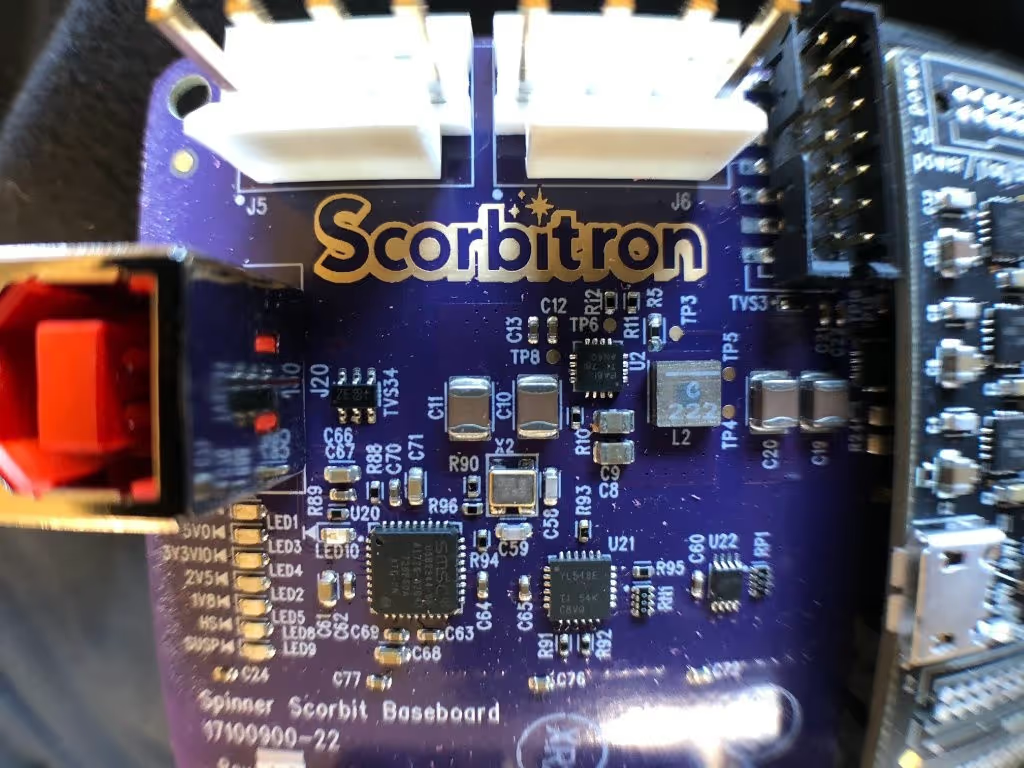
In September of 2020, Scorbit officially launched V1 of their product and moved into the second phase of the company.
They had some early wins. Despite needing to pivot the concept early due to the pandemic, initial interest in the product dovetailed with a rise of home arcades, and then physical locations as venues started re-opening around the country. In 2021, Stern launched Insider Connected and validated the concept and demand for connected pinball.
It’s in this time that Scorbit goes wild on the iteration and experimentation that any good startup goes through. They received more feature suggestions than they could realistically implement at the time, but acted on what they could. They published their API, made inroads with other open-data projects in pinball, and let people find their own ways of integrating with the platform. Since Scorbit was designed to work on every machine, manufacturers even took notice.
As Ron recalled, “Manufacturers came to us and wanted to work together, and the idea with the modern manufacturers is that it’s not a hardware solution, it’s a software solution. Then it’s easier to implement, and it’s more of a partnership.”
Importantly, Jay added, “But, during this growth phase of business, putting on my venture hat for a second, we didn’t really have a business model.”
The most visible partnership in this phase materialized in late 2020, when it was announced that the Scorbit platform would be fully integrated with all Jersey Jack releases, starting with Guns n’ Roses. The Scorbit team would spend the next year or so working closely with the Jersey Jack team on bespoke product features, like achievements, which launched in September of 2021, weeks after Stern launched Insider Connected.
The partnership with Jersey Jack would also suddenly and publicly end in the Spring of 2023, when Jersey Jack announced their intent to remove Scorbit from its products after the two companies couldn’t reach an agreement on a path forward.
Since we covered this moment early on in our own business journey, I asked Ron to explain how significant this loss was for the team. He called it a “substantial emotional blow” and said it set them back in every way you could think of.
With this context in mind, I also asked Jay to reflect on the journey of Scorbit and what it means for a startup to fail in this way.
“Part of it is the context of pinball as we came into it. As we’re sort of entering this world, we’re watching the pinball community kind of struggle with, you know, drama around people trying to launch machines. What is essentially an extremely low margin business building pinball machines… usually what happens is within a community, there’s a success cycle, and the successful entrepreneurs within that community put more money into new ideas in that community. And there hasn’t been much of a success cycle in pinball. It’s been mostly dominated by a couple of players, right? And so that is the context.”
After taking a few months to step back and reflect, Jay and Ron had a series of tough conversations about the future of Scorbit. Ultimately, they landed on insights that would lead to the development of the current business plan, enabling them to raise a new round of external funding and ushering in this latest phase of the Scorbit product.
I asked if the team had this kind of focused business plan in place from day one, and if they still would have chased some of the opportunities they did during phase two.
Ron thought it was possible they could have arrived at this point faster, but the feedback they received in going through the exercise was invaluable and essentially forced the team to continue to iterate on the product and ship new features for their users on a regular basis.
Jay put things a little differently, but more or less agreed. “Like we learned and changed, achievements went through a lot, and we had the advantage of Jersey Jack testing all that stuff for us at scale, and so we were able to grow that. My view on it is we got very lucky because of the timing and the willingness of the community to basically feed back all these little details. And now we have the benefit of essentially nine years of that iteration.”
Scorbit Enters a New Phase
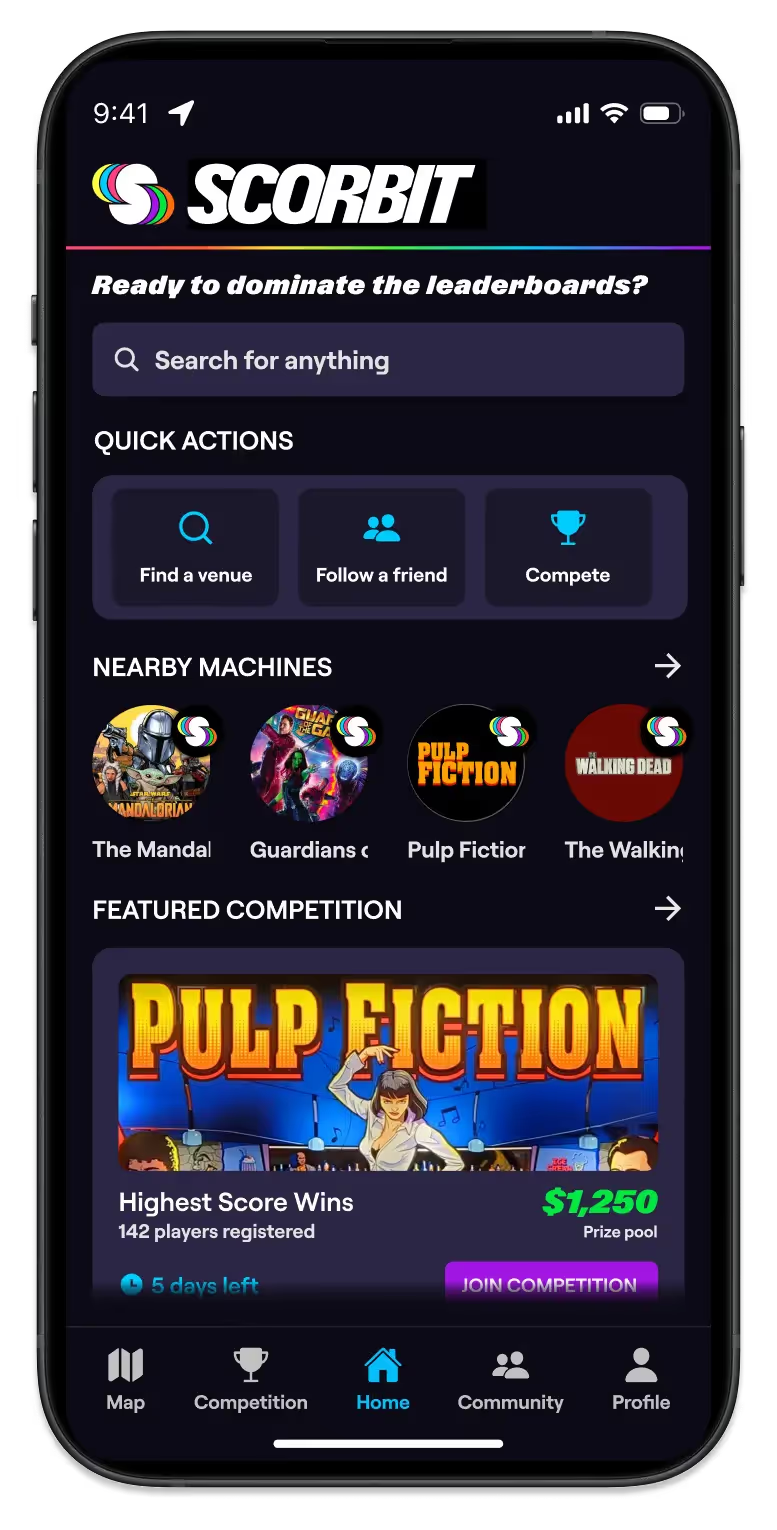
That brings us to our current moment and the third phase of Scorbit.
As Jay explains, “When we went to go do the work, because pinball’s a relatively small, in terms of venture conversations, a relatively small market on the outside looking in, your initial reaction to that is, okay, how big could this be? So let’s go out and find out what other models are out there, and where is the opportunity here? And you start to look at the location-based entertainment community.”
Think not only of your run-of-the-mill family fun centers and Dave & Buster’s chains, but also places like axe-throwing venues, escape rooms, and other places where pinball can often be found, but isn’t always the primary focus.
Ron tells me about a recent research study showing that Gen Z doesn’t want to stay home to watch a movie anymore—they want to go out and see it in a theater, and put their phones away.
Then Jay tells me about conversations they had with venue owners and operators, and the research they did around companies like Touch Tunes, Raw Thrills, and Incredible Technologies, as well as trivia and other integrated online/offline experiential products, and the opportunity for Scorbit starts to come into clearer focus.
“These companies have for a long time realized that there’s a casual player, somebody who normally just enjoys to play once in a while, but that if you throw in additional value to them, there is an incredible opportunity to bring those people, not just into the Scorbit universe, but actually into the bar in the first place and drive more revenue for these smaller businesses. And the second you start talking about driving revenue, higher revenue, just from a business analytics standpoint, if you can underline the incentives of your business model with the incentives of your local business, then everybody’s working together to the same end. And that’s a winning story, right?”
What if there were a pinball tournament all the time?

Finally, I ask the question everyone on the call is there for. What’s the pitch for the new Scorbit?
Jay defers to Ron.
“We’ve completely redesigned the app, rebuilt from the ground up, so it’s a brand new interface. People who have been using Scorbit previously, it’s a new way of using it, but all the original functionality works the same way.
You can find places to play pinball. You can keep track of your scores on any pinball machine there is.
But on the machines that have the Scorbit hardware and Scorbit enabled, and at participating venues that are Scorbit partners, we’re gonna be rolling out a digital payment system so that folks can pay credits for the machine with Scorbit. So no need to have a plastic sleeve of quarters anymore.
Additionally, giving the venues the ability to create asynchronous tournaments on machines that will allow players to compete and potentially win prizes, specifically money. Venues will have the ability to offer up prizes that are not money if they want to, if they want to offer up a bar tab or a gift card or something like that.
There’s also the option to have, in the states where it is legal and the regulations are clear, to have a rising jackpot where the more people who participate, the bigger the jackpot gets.”
To me, this is where things start getting really exciting — incentivized social play on pinball that’s not so focused on the IFPA or rec leagues — but Ron continues.
“Imagine on a Monday, the competition starts on the Addams Family at your favorite pinball location. And you go and put in your score and you’ve now got the high score. And then on Tuesday, Jay rolls in and bests your score. You get a notification on the app saying, Jay just beat your score. That means Wednesday, you’ve got to go and try to beat it. And every time that happens, the more people chip in, the bigger the jackpot can get. And at the end of the tournament, whether it's the top three or top four winners, all get a payout.
And then next week it can start again.”
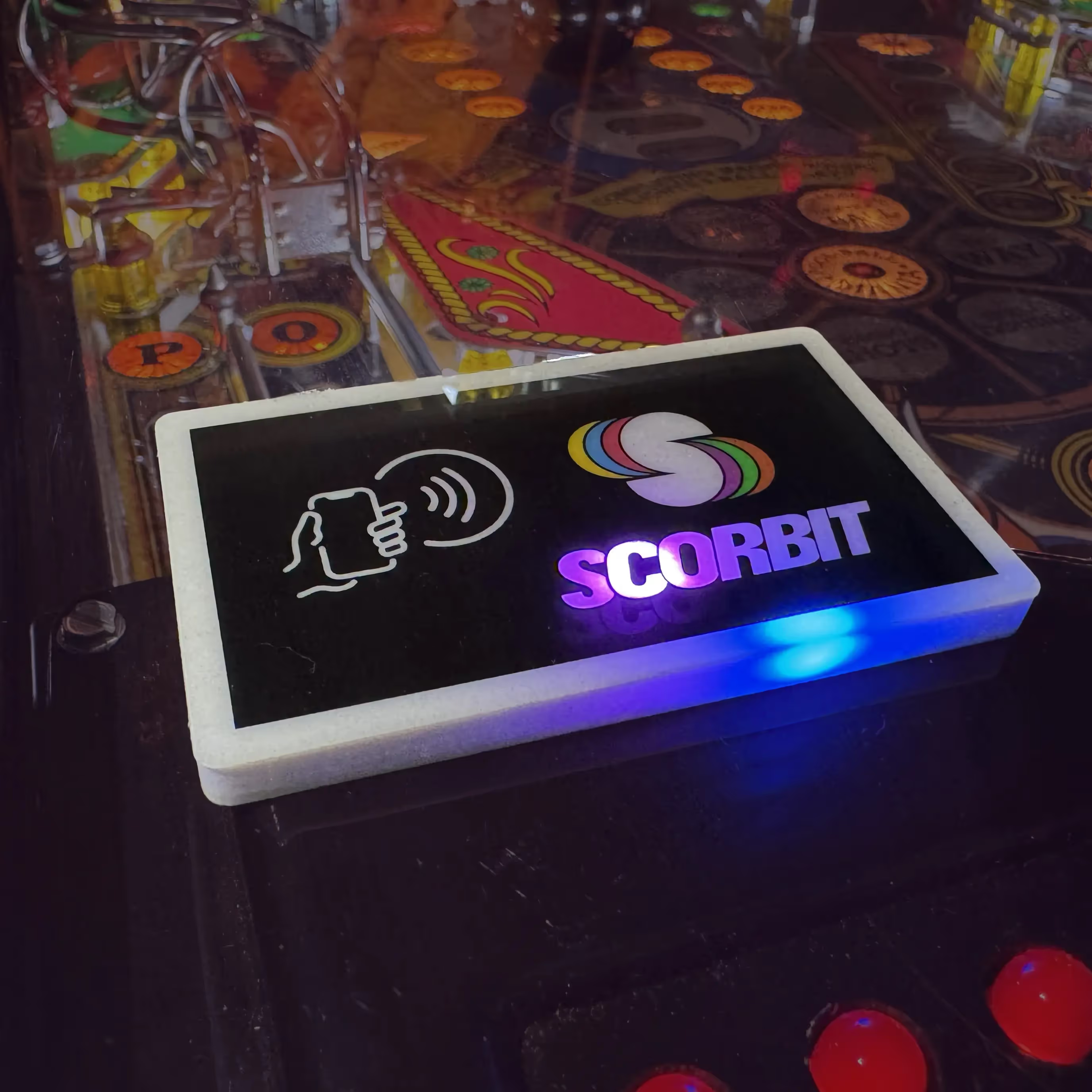
In order to better facilitate digital payments and other quality of life improvements for players and operators, Scorbit is introducing a slew of hardware improvements, including, notably, NFC tap pad scanning for payments and for user logins (I’m told Apple Watch integration is in the roadmap as well).
There’s also a new version of the Scorbitron, the system's central controlling device, which is said to be more powerful, more advanced, half the size, and consumes 1/10th the power of the prior version. There’s a new DMD probe, and now a CPU probe, which replaces the existing game’s CPU chip, allowing Scorbit to access all of the game’s code and its memory in order to make changes and collect information in real time.
Scorbit will now give this hardware to participating venues at no money down. The venue will be required to sign an operating agreement that pays for the cost of the hardware over time (I’m told the model anticipates a payback period of 3 months, but realistically, in as little as 1 month).
How the New Scorbit Makes Money
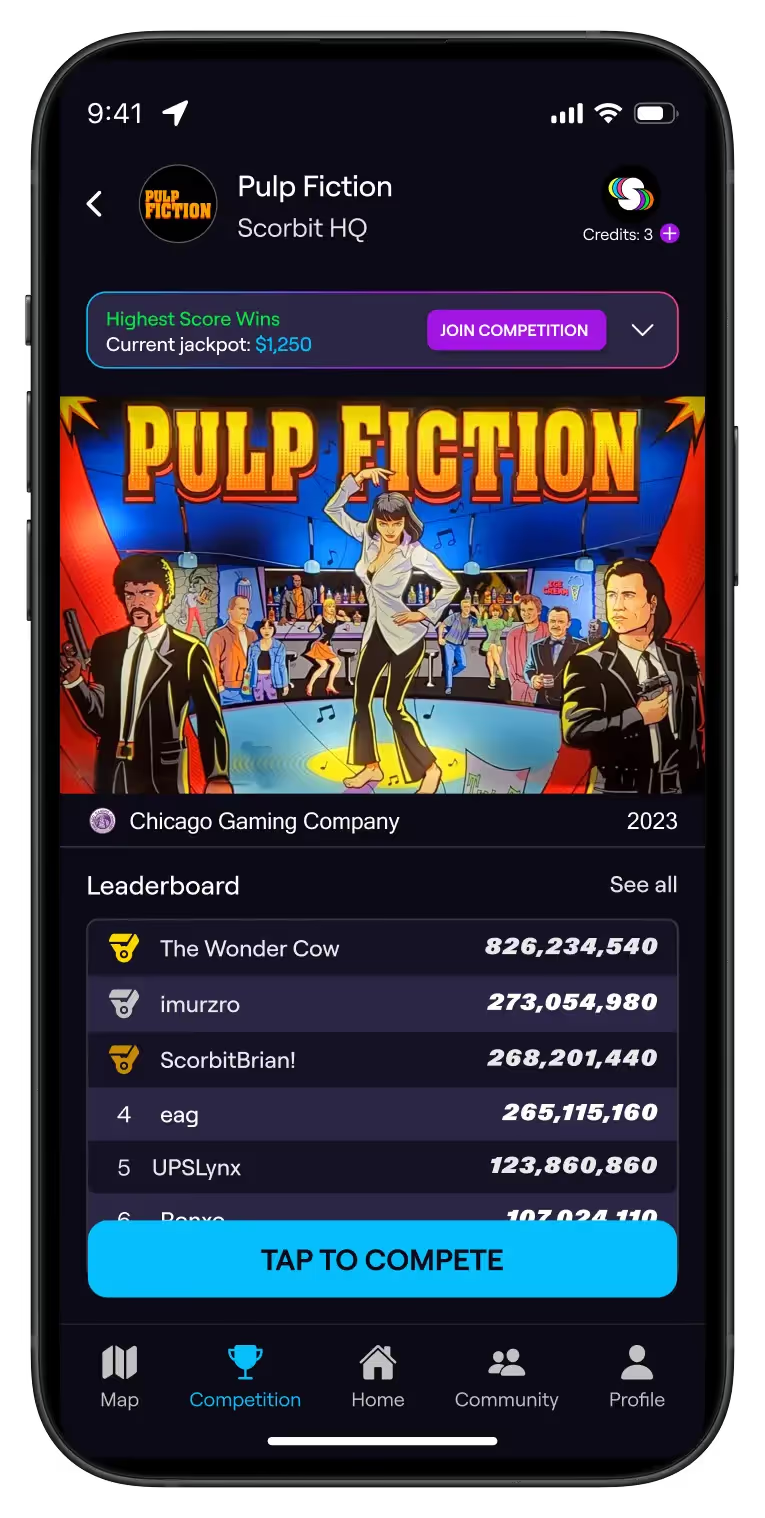
This was the big question I wanted to better understand. With all these improvements and changes, how exactly would this new Scorbit actually make money?
The obvious answer must be in the digital payments, where Scorbit would essentially take a percentage of the venue’s coin drop to pay for the convenience.
Both Jay and Ron stressed to me that the payment system is not their intended profit center.
“We don’t want to be a digital payment system.”
Jay explains further, “We’re not making money from coin drop. When you enter a competition, there’s a fee for entering the competition, just like a ToPS tournament or other kinds of tournaments. That is where the source of revenue comes.”
Venues will get a revenue share from these tournaments as well, which is also how the hardware is paid for.
While the focus is decidedly on location pinball, home users will be able to buy the hardware for home use too.
This is kind of the approach I would expect the Scorbit team to take. If there’s anything I know about them, it’s that they are so passionate about and invested in the pinball community that they wouldn’t want to be an extractive entity. They would want to structure things in a way that everyone can participate in the upside, and it sounds like that’s exactly what they have done here.
When it Works
Almost intuitively, I understood the potential impact this kind of system could have on the pinball landscape if it works as intended. More people in the ecosystem, healthier location play, and an industry push towards more innovative digital services.
But I still wanted to understand what Scorbit’s idea of success looked like. So I asked, “If it works, what does that look like for Scorbit and what does that look like for the pinball community?”
Ron immediately responds, “So when it works, I mean, ideally, if we’re here in a year from now or two years from now, what we’re looking at is, what the hope is, is that we’re looking at hundreds of venues around the country with Scorbit installed in them. Players using the Scorbit app as a companion app to be able to pay for games, anywhere in the country, and enabling another level of competition amongst pinball players to continue to scratch that itch, and give pinball players more ways to make money playing pinball. And then help venues make more money off of the pinball machines, to help increase their revenues.
I mean, that’s the main goal here. It seems like it should be a win-win for the player community and the operator and venue community in giving everybody what they want, which is more pinball.”
If successful, the Scorbit team plans to expand the platform beyond the pinball market, as they see it as a natural fit for other arcade games, skeeball, and other entertainment devices commonly found in a family fun center or location-based entertainment venue.
“Basically anything where anybody said, ‘Hey, five bucks says I could beat you at that.’ There’s no reason why the platform we’re building can’t be extended.”
Ron continues, “Right now, our focus is on pinball, and obviously, our hearts are in pinball. We love pinball, and I wanna get pinball locked and working and absolutely solid, but we wanna build a cool, sustainable business built around recreation.”
What Comes Next
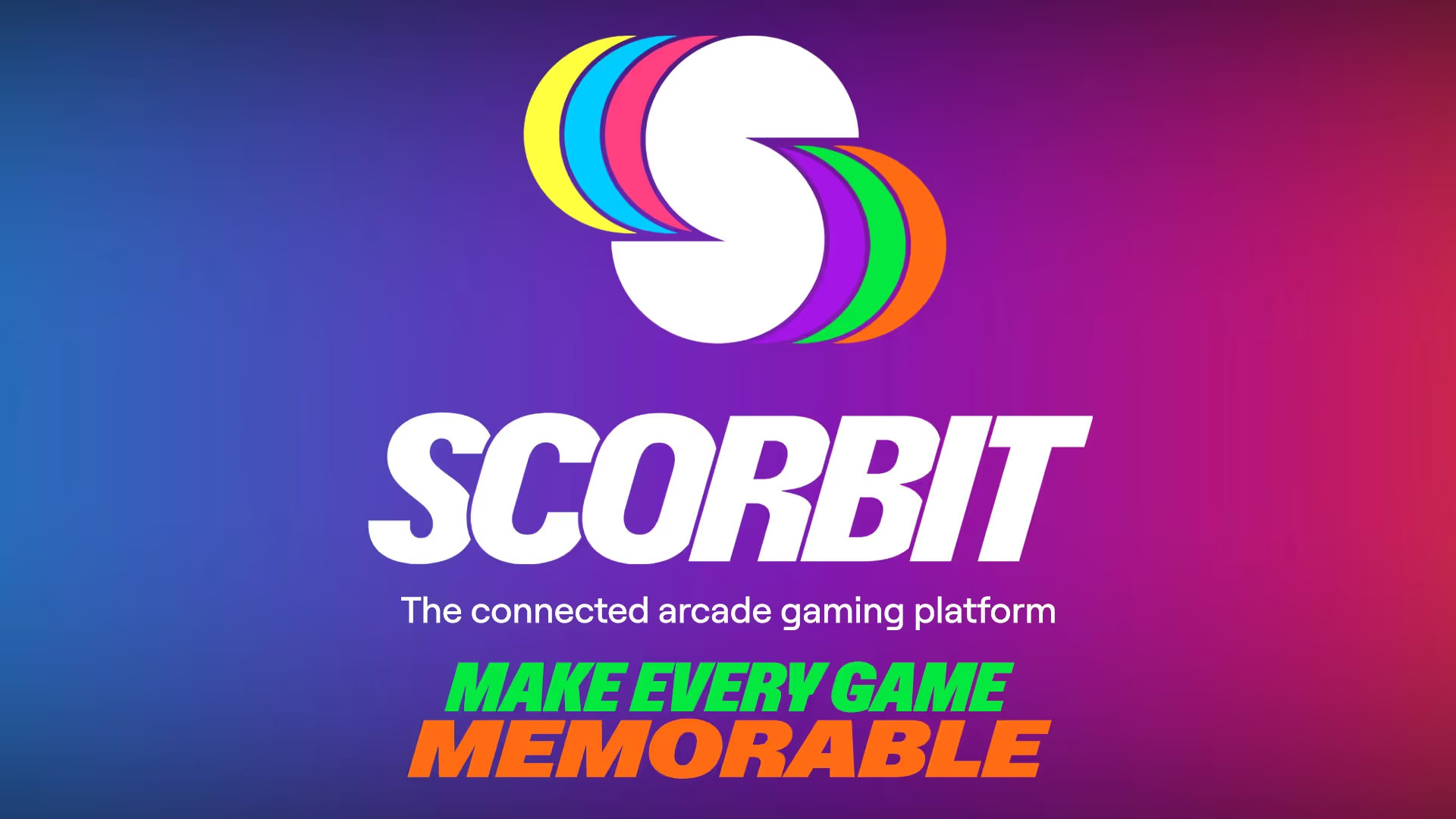
In the years I’ve been following the Scorbit project, this is the clearest I’ve ever understood the vision and the most excited I’ve been about its future potential. I hope the confidence the team conveys is warranted, and that we have a follow-up conversation in a year or two about how well it’s worked and the impact they’ve had on the community. But nothing is ever guaranteed, especially in the niche and sometimes volatile world of pinball.
For now, Scorbit is focused on launching this latest phase of the company at Pinball Expo. That means telling the pinball world about the exciting changes, updating their app, and rolling out all the new features in the coming weeks. They have a few locations already lined up as launch partners. Funspot in New Hampshire, LITT Pinball in Minneapolis, Rullo’s in Brooklyn, Quarter Bandits in Spring Hill, Tennessee, and Lynn’s in Seaside, California. They will be starting with high score tournaments, with other formats in the pipeline.
The team will introduce the new Scorbit platform state by state as they get proper legal approvals and other agreements in place, and interested venues and operators will be able to apply for participation directly on Scorbit’s website.
More than anything, if this works, it’ll be a great story for the community and proof that with a little vision and a lot of persistence, cool ideas can succeed in this industry.









